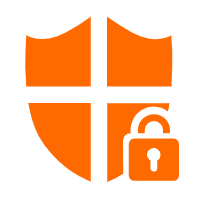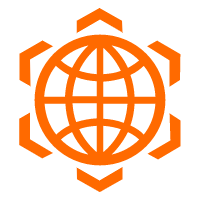The rapid adoption of cloud computing has transformed the way businesses operate, providing unparalleled scalability, cost efficiency, and flexibility. However, with these benefits come significant cybersecurity challenges. As organizations migrate sensitive data and critical applications to the cloud, they face unique risks that demand proactive measures and robust solutions.
This article will walk you through the current challenges in cloud cybersecurity and strategies to effectively address them.
Cloud infrastructures attract malicious actors. Hackers target such systems to steal sensitive data. Security breaches often take place through vulnerabilities in cloud storage that are left exposed. System misconfigurations also present other weak points. Compromised access credentials also pose a significant risk. When breaches take place, organizations incur significant financial losses. Their reputation often takes a severe beating. There are multiple entry points across distributed cloud systems, which makes defense very challenging.
For example, in 2019, millions of Facebook records were exposed because of a misconfigured Amazon S3 bucket. Such is the human factor involved in such cases.
Most breaches occur due to misconfiguration of cloud services. Some of the major vulnerabilities occur because of simple human error. Storage buckets, exposed to public access, present a significant risk. Lack of or weak access controls compound the problem. It is often these basic mistakes that expose sensitive corporate data. Security teams frequently uncover such misconfigurations while doing audits. Even experienced IT staff may miss critical security settings. A well-known case involved Capital One, which was breached when a firewall misconfiguration allowed an attacker access to customer data.
Access to cloud systems creates risks from within organizations. Both employees and vendors can pose security threats. Some breaches happen by accident, and others occur through deliberate actions. Traditional security measures often fail to catch insider threats. A frustrated employee might leak company data on purpose. Staff members sometimes share private files with unauthorized parties by mistake. Even contractors with limited access can compromise security. These internal risks prove especially hard to spot and control.
Many organizations leverage multiple cloud service providers to meet their business needs. While this approach enhances flexibility, it also introduces complexity in managing security across disparate platforms, leading to potential gaps in coverage.
Cloud providers operate under a shared responsibility model, where they secure the infrastructure, and customers are responsible for securing their data and applications. Misunderstandings of these responsibilities can leave critical vulnerabilities unaddressed.
Advanced hackers pose a serious threat to cloud systems. Many work for foreign governments. They use complex tools to break into cloud networks. Once inside, they create hidden access points. These allow them to steal data slowly over months or years. Standard security tools often miss these subtle attacks. Organizations need specialized monitoring systems to spot them. Quick response teams must be ready to counter these threats. Regular security updates help block new attack methods.
Organizations operating in regulated industries must adhere to stringent data protection standards, such as GDPR, HIPAA, or PCI DSS. Ensuring compliance in dynamic cloud environments can be daunting and resource-intensive.
Enforce the principle of least privilege to limit access to sensitive data and critical systems. Multi-factor authentication (MFA) and identity and access management (IAM) solutions can strengthen user authentication and authorization processes.
Security teams need robust detection tools. SIEM systems offer powerful threat monitoring capabilities. Cloud-native security solutions provide real-time alerts. These tools help spot suspicious activities quickly. Response times improve with automated monitoring. Modern security platforms can track threats across the entire cloud network.
All sensitive data needs strong encryption. This applies to stored data and data moving across networks. Industry-standard encryption protocols offer the best protection. Regular key rotation is essential. Store encryption keys in secure locations. Never share keys through unsecured channels. Implement strict access controls for key management. Review encryption practices regularly.
Automated scanning tools help find cloud misconfigurations. These tools can fix common security issues quickly. Regular audits catch problems early. Infrastructure as Code brings consistency to cloud setups. IaC templates ensure security standards across platforms. Using IaC reduces manual errors in deployments. Standardized configurations work across different cloud providers. Automation makes security maintenance more reliable.
Educate employees and stakeholders about cloud security best practices, including recognizing phishing attempts, safeguarding credentials, and understanding the shared responsibility model.
Implement a Zero Trust model, which assumes that no entity—whether inside or outside the network—is inherently trustworthy. Continuous verification, micro-segmentation, and least-privilege access are critical components of this approach.
Perform periodic risk assessments, penetration testing, and vulnerability scans to identify and mitigate potential weaknesses in cloud environments.
CSPM tools provide visibility into cloud configurations and ensure compliance with security policies. They can detect misconfigurations, enforce best practices, and streamline compliance efforts.
The cybersecurity aspect must not be outdone in the evolution of the cloud, as it is a necessary transformation that changes the digital landscape. This will require organizations to approach cloud environments holistically, adopting advanced technologies and creating a culture of security awareness. Once the challenges mentioned above are addressed and solutions are put into place, businesses can utilize the power of the cloud confidently and protect their critical assets.
Cloud cybersecurity refers to the set of policies, technologies, and controls deployed to protect data, applications, and infrastructure in cloud computing environments. As organizations increasingly migrate their operations to the cloud, understanding and implementing robust security measures has become critical for business survival.
● Cloud infrastructures are prime targets for malicious actors
● Multiple entry points in distributed systems increase vulnerability
● System misconfigurations and compromised credentials are major risk factors
● Financial and reputational impacts can be severe
● Example: The 2019 Facebook data exposure through a misconfigured Amazon S3 bucket
● Risks from both employees and vendors with system access
● Includes accidental and deliberate security breaches
● Traditional security measures are often inadequate
● Challenges in detecting and controlling internal risks
● Potential for unauthorized data sharing
● Security management across multiple cloud platforms
● Integration challenges between different providers
● Potential security gaps in coverage
● Increased risk of misconfigurations
● Sophisticated hackers, often state-sponsored
● Complex tools for network infiltration
● Long-term data theft capabilities
● Difficulty in detection with standard security tools
● Need for specialized monitoring systems
● No inherent trust for any entity
● Continuous verification requirements
● Micro-segmentation implementation
● Least-privilege access controls
● Encryption for data at rest and in transit
● Industry-standard encryption protocols
● Regular key rotation procedures
● Secure key management practices
● Regular encryption audit processes
● Principle of least privilege enforcement
● Multi-factor authentication (MFA) implementation
● Identity and Access Management (IAM) solutions
● Regular access review and updates
● Automated configuration scanning
● Infrastructure as Code (IaC) implementation
● Regular security audits
● Standardized configurations across platforms
● Reduced manual error risk
● Enhanced threat detection capabilities
● Automated incident response
● Reduced mitigation time
● Predictive security measures
● Integrated networking and security
● Cloud-delivered service model
● Seamless resource access
● Enhanced security framework
● Hardware-based secure enclaves
● Protected data processing
● Enhanced encryption methods
● Improved data privacy
It needs a holistic approach, incorporating both technology, processes, and people. Organizations must remain abreast of emerging threats and solutions while maintaining strong security measures. By implementing the recommended solutions and best practices, businesses can ensure their cloud environments are effectively protected while reaping the benefits of cloud computing.
Disclaimer: The views expressed herein are for reference only and don't necessarily represent the official views of Alibaba Cloud.

2 posts | 1 followers
FollowAmuthan Nallathambi - August 24, 2023
Alibaba Cloud Community - February 16, 2024
Alibaba Cloud Community - August 3, 2023
Alibaba Cloud Security - July 9, 2020
Iain Ferguson - December 17, 2021
Alibaba Cloud Community - September 16, 2021

2 posts | 1 followers
Follow Data Security on the Cloud Solution
Data Security on the Cloud Solution
This solution helps you easily build a robust data security framework to safeguard your data assets throughout the data security lifecycle with ensured confidentiality, integrity, and availability of your data.
Learn More Security Solution
Security Solution
Alibaba Cloud is committed to safeguarding the cloud security for every business.
Learn More Cloud Hardware Security Module (HSM)
Cloud Hardware Security Module (HSM)
Industry-standard hardware security modules (HSMs) deployed on Alibaba Cloud.
Learn More Security Overview
Security Overview
Simple, secure, and intelligent services.
Learn MoreMore Posts by VikashThakur